Through the skyline, sealine and wadis of the nation, it’s the men who stay with us
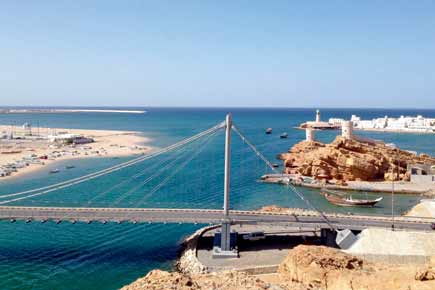
Leisure
Best time to visit: November to mid-March
You need: A week
ADVERTISEMENT
We are off to a bad start with Qais the Arrow. He has been waiting in the lobby of the grand Al Bustan Palace for half-an-hour due to some miscommunication about timings. The aurelian walls seem to blacken with his remonstration, or maybe our shame.
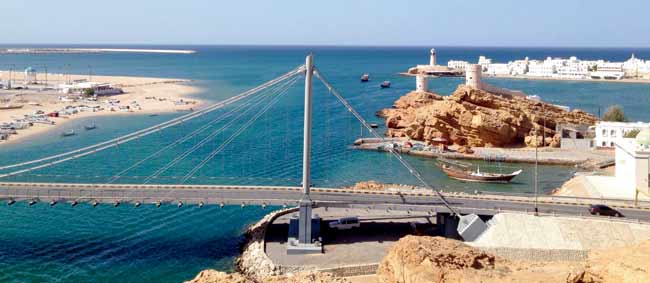
The dhow-making town of Sur takes your breath away. Pics/Mitali Parekh
Qais is to be our minder over the next four days as we explore northern Oman through the livestock markets of Nizwa, the heights of Jebel Shams and the canyon within, the crushed coral sands of Al Sharqiyah, the white-washed homes of Sur, the turtle beaches of Ras Al Jinz, and all the wadis in between.
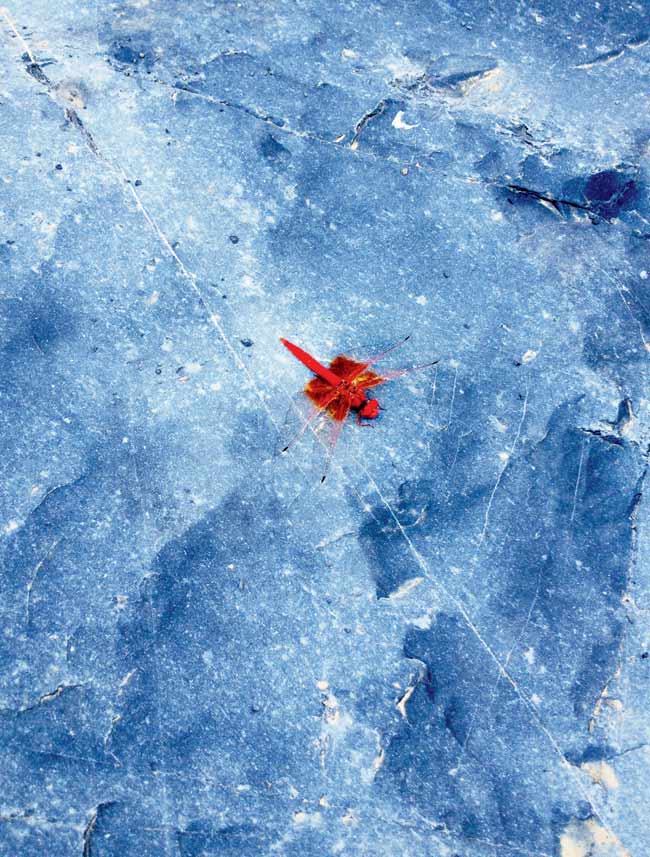
Dragonflies in Oman come in various colours. Not interesting, unless you are into insects. And why wouldn't you be?
Along the road in Oman
Everything in Oman is ‘the best’, ‘the first’, ‘the largest’ and ‘the most’. Unfortunately, his narrative is countered by the know-it-all among us who grew up in the region.
Which is not to say Oman is not impressive; it’s impressive enough to not need embellishment. Matters get grislier at the Sultan Qaboos Grand Mosque. It is easy to be dwarfed by a place of worship meant to accommodate 20,000 people.
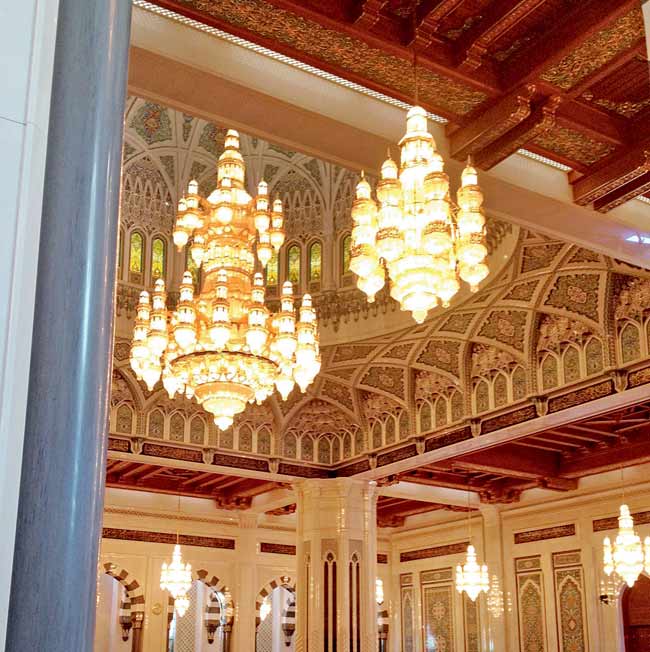
Swarovski chandeliers shine upon the carpet of contention at Al Qaboos Grand Mosque
Computer carved facade, sandstone from Rajasthan, carpets from Iran and the imam’s niche with influences from Samarkhand - the mosque brings together the grandeur and the simplicity of global Islamic culture. Qais rattles off the numbers for the number of Swarovski crystals in the grand chandelier and the square feet of the single-piece Iranian carpet (4,343 square metres) that he proclaims the largest in the world. A voice at the back whispers doesn’t the Shaikh Zayed Grand Mosque in Abu Dhabi claim the same? Google to the rescue: The latter wins at 5,625 square metres.
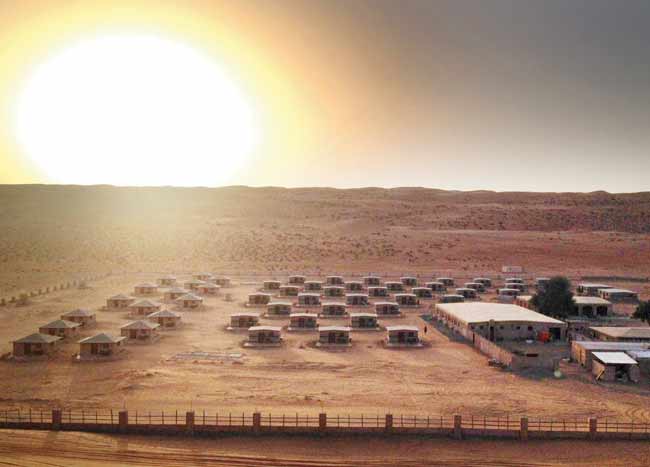
A view of the Arabian Oryx Camp in the Sharqiyah sands. The evening was a prelude to the Sandstock music festival
Qais is not pleased. He’s one of the oldest employees at Zahara Tours and Travels, arguably the oldest and largest travel company in Muscat. He's worked there for 15 years and is one of the leading trainers and a mentor to “boys” such as Muhammed and the slick Loai, whom we meet later. He has superior geological knowledge and helps us collect shells to take back home.
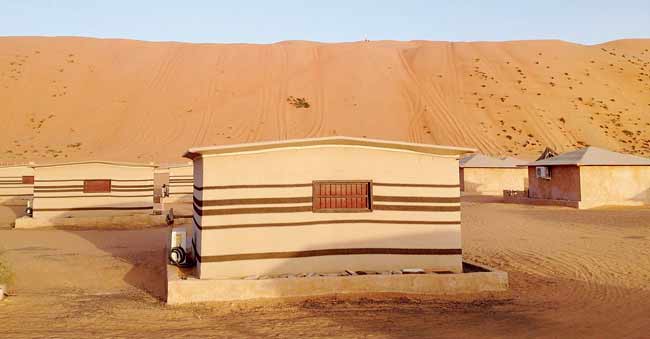
Don’t believe your guide if he says it takes 15 minutes to climb up a sand dune
When we get off at the red-gold dunes, he quickly collects the plastic and metal debris to dispose off the right way. He stops the car to quickly slip some money into the hand of a blind bedouin selling goat wool trinkets along the road.
Without condescension or flourish, he distributes leftover picnic boxes to bedouin children. He’s teases girls about their camel teeth and has a word for every gas attendant and hotel manager.
Qais makes it hard for us to make up our mind about him. At the Sineslah forts, dhow building factories and the Nizwa fort, ‘Now go see this’ he commands us and we shuffle along dutifully. He calls one of us ‘Bengaali’ and the other ‘Malabari’, long after being corrected. He offers us as a choice of wives to a toothless goat herder at Jebel Shams. We return the favour by stunning him with the concept of polyandry.
Sights and sounds
Many tour companies assign desi guides to Indian groups because they are aware of how differently Omanis treat Indian tourist from western ones. Those that only associate Indians with blue collar workers have trouble treating them as equals. Those who work with them as white-collared colleagues, respect them. The Al Bahwan group -- the largest business house in Oman -- is named in homage to the Indian partner Baghwan who was instrumental in making the business a success.
Qais is uncomfortable with questions about his private life and deflects them with jokes (what car do you drive? A camel. How many children do you have? 20). Qais denounces the imagination and its agents of fiction, movie, newspapers and folklore (‘I don’t think the Sindabad stories are true). Posh Spice had to tell him she was famous, when he was driving
her around.
Muhammed delights in urban trivia. How the dhow-building town of Sur is famous for giving its residents nicknames that gain more currency than their family names. The houses with decorative gates belong to the wealthy. The new buildings along the sea-line from Sur to Muscat are compensatory homes granted to those whose homes have been acquired by the government; or those displaced by calamity, or those who can’t be provided basic infrastructure.
Loai and his glass filled with luminiscent caramel liquid infiltrate our all-women campfire at Jebel Shams, the highest peak of Oman. “How you liking Omaaaan?” he asks grinning ear to ear. “You having a good time? I’m Loai -- Love Oman Alpha I,” he continues in a manner that would make mature ladies giggle. Unfortunately, his quivery contains only these two conversation kindlers. He is a freelance guide who also trained under Qais.
Sandstock, a music festival in Al Sharqiyah sands, introduces us to more romantic opportunists and optimists. The festival is attended mainly by European expats. While we dance, our driver is entangled in his “best chance” for the evening. An inebriated swayer engages us: “Have you seen my baby? I’ve lost my baby. She’s English. I'm drunk. That not good.”
Four days of adventures later, we’re back in Muscat. We’re coiling up for an emotional goodbye, which Qais seems to sense. He’s having none of that and is briskly out the door with a quick ‘bye’. Muhammed wants to linger, perhaps exchange an email id, but follows his mentor. In one generation, he would have been an enthusiastic penpal. In this generation, they've coloured experiences of Arabia.
Oman is a still country, best seen in motion. Drive through granite deserts, into soft coral sand dunes, along blue, blue seas and into lush green oases enriched by date and mango orchards. Wear a swimsuit inside and don’t pass up any chances to go in for a dip. And there will be many - from the Bimmah Sinkhole to the Wadi Bani Khalid.
To swim in cool, blue, non-saline water where you can see the floor is not something we get to experience often. At least not without the fear of snakes, crocodiles and other beings that can grab your feet from underneath. Succumb to the nibbling fish at Bimmah and venture into the cool mystery of the sinkhole’s shadow region. Climb on to rocks at Wadi Bani Khalid and leap into the water fearlessly. Swim upstream through narrow passageways with limestone guards. Enjoy the gifts of a desert.
 Subscribe today by clicking the link and stay updated with the latest news!" Click here!
Subscribe today by clicking the link and stay updated with the latest news!" Click here!






